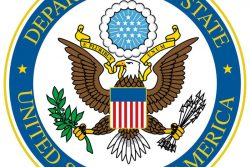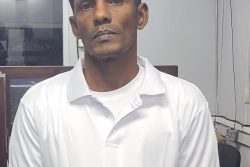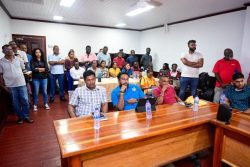WASHINGTON (Reuters) – Twenty of the world’s most troubled countries have made progress in efforts that range from reducing poverty to improving the education of girls and cutting down on the deaths of women in childbirth, the World Bank said yesterday.
The improvement is a big shift from just a few years ago for the 20 fragile and conflict-hit states.
Data shows these 20 countries have met at least one of a series of targets adopted by the United Nations in 2000 that aim to slash poverty, hunger and disease in poor countries by 2015, known as the Millennium Development Goals, according to the World Bank’s analysis.
Another six are on track to meet the goals by the deadline in 2015, with the progress visible in part due to better data collection and monitoring.
Data gathered in 2010 and earlier had found none of these states had met any of the Millennium Development Goals.
Places like Afghanistan, Nepal and Timor-Leste have halved the number of people in extreme poverty, or increased the number of girls enrolled in schools.
“This should be a wake-up call to the global community not to dismiss these countries as lost causes,” World Bank President Jim Yong Kim said.
“Development can and is being achieved, even amid fragility and violence.” But states caught in repeated cycles of violence are still lagging behind the rest of the world in development metrics and are struggling to meet more than one target.
States are also vulnerable to relapse. Yemen was on track to reduce the number of women dying from childbirth before violence erupted during the Arab Spring in 2011.
One of the challenges in helping fragile nations is trying to bridge the gap between long-term development and humanitarian assistance, which tends to pour in once a country emerges from conflict but just as quickly dries up after international attention fades or there are no immediate signs of progress, Caroline Anstey, managing director at the World Bank, said.
“There are pathways out of fragility. They require that support continues after the cameras leave,” Anstey said in an interview. “They require that we focus on clear deliverables, that we track results, and that support is transparent and accountable.”
The World Bank has started to work more closely with the United Nations, which has typically focused on peace-keeping and humanitarian assistance. Kim, the World Bank’s president, and UN Secretary General Ban Ki-moon are planning a joint visit to the Great Lakes Region in Africa later this month, one of the first ever missions attended by heads of both organisations.
“Humanitarian aid isn’t going to enable you to build institutions, to have those long-term investments in training or even education and health,” Anstey said. “We think that by working more closely with the UN, we can bridge that development gap.”
With belt-tightening across Europe and in the United States, the World Bank has put more focus on strenuous oversight of how aid money is used and if it actually impacts the poor.
Increasingly, that means talking to local communities and countries themselves, and targeting projects to their needs -including trying to address the causes of the conflict.
“What we’re trying to do is ensure that in all the conflict and fragile states that we work in, we try to get better analysis of the drivers of conflict and fragility,” said Joel Hellman, director of the World Bank’s Global Center on Conflict, Security and Development.
“Because if you don’t address those basic drivers … other investments could be undermined by the return to conflict,” he said.









